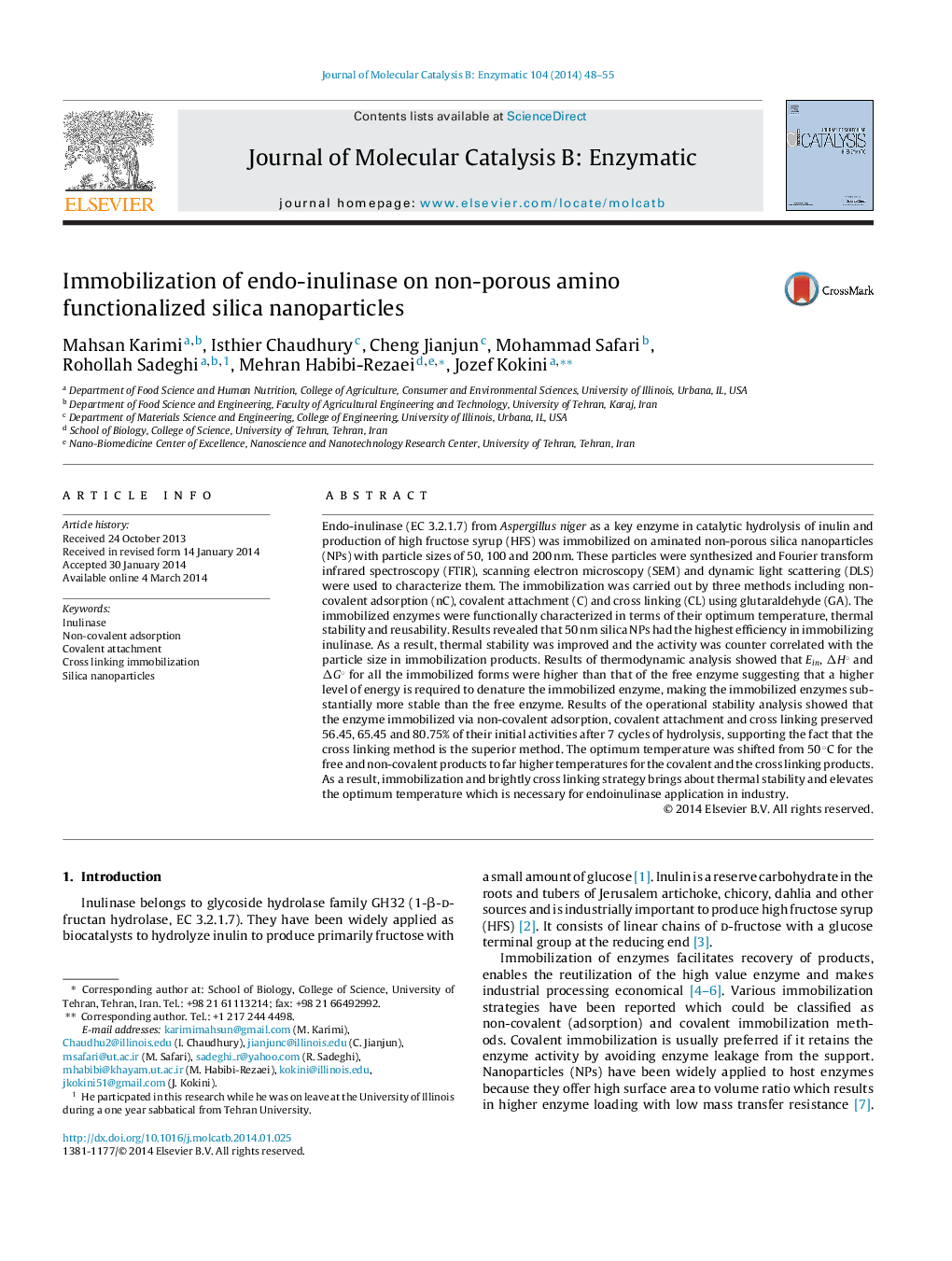| کد مقاله | کد نشریه | سال انتشار | مقاله انگلیسی | نسخه تمام متن |
|---|---|---|---|---|
| 69634 | 48783 | 2014 | 8 صفحه PDF | دانلود رایگان |
• Immobilization on 50 nm silica NPs results in the highest bound specific activities and loading capacities.
• Cross linking immobilization resulted in the higher activity than the covalent and non-covalent methods.
• The optimum temperature for covalently and cross link immobilized endo-inulinase was remarkably shifted to far higher temperatures.
• Thermal stability of free inulinase and immobilized inulinase showed that the resistance is improved after immobilization via cross linking method.
• The energy barriers of thermal inactivation (Ein) were higher for the immobilized enzyme especially with crosslinking compared with free enzyme.
Endo-inulinase (EC 3.2.1.7) from Aspergillus niger as a key enzyme in catalytic hydrolysis of inulin and production of high fructose syrup (HFS) was immobilized on aminated non-porous silica nanoparticles (NPs) with particle sizes of 50, 100 and 200 nm. These particles were synthesized and Fourier transform infrared spectroscopy (FTIR), scanning electron microscopy (SEM) and dynamic light scattering (DLS) were used to characterize them. The immobilization was carried out by three methods including non-covalent adsorption (nC), covalent attachment (C) and cross linking (CL) using glutaraldehyde (GA). The immobilized enzymes were functionally characterized in terms of their optimum temperature, thermal stability and reusability. Results revealed that 50 nm silica NPs had the highest efficiency in immobilizing inulinase. As a result, thermal stability was improved and the activity was counter correlated with the particle size in immobilization products. Results of thermodynamic analysis showed that Ein, ΔH° and ΔG° for all the immobilized forms were higher than that of the free enzyme suggesting that a higher level of energy is required to denature the immobilized enzyme, making the immobilized enzymes substantially more stable than the free enzyme. Results of the operational stability analysis showed that the enzyme immobilized via non-covalent adsorption, covalent attachment and cross linking preserved 56.45, 65.45 and 80.75% of their initial activities after 7 cycles of hydrolysis, supporting the fact that the cross linking method is the superior method. The optimum temperature was shifted from 50 °C for the free and non-covalent products to far higher temperatures for the covalent and the cross linking products. As a result, immobilization and brightly cross linking strategy brings about thermal stability and elevates the optimum temperature which is necessary for endoinulinase application in industry.
Figure optionsDownload as PowerPoint slide
Journal: Journal of Molecular Catalysis B: Enzymatic - Volume 104, June 2014, Pages 48–55
